Tropical destinations are countries found on or around the Equator, surrounded by lush ecosystems, geological wonders, magnificent beaches, and endowed with sun-kissed climates that last all year. These places are perfect for summer vacations because they only have two seasons: wet and dry. Perpetually humid weather tempts you to dip your toes in the cool water and take in the lush vegetation surrounding the shores. Hummingbirds, macaws, pigeons, birds of paradise, quetzals, eagles, toucans, cassowaries, and owls are just a few of the many species of birds that call tropical environments home. So it makes us wonder, what are the largest lakes in the tropics? Below, we compiled a list of the top 10 largest tropical lakes in the world where you can enjoy excellent cruises, tours, walks, and water activities if available.
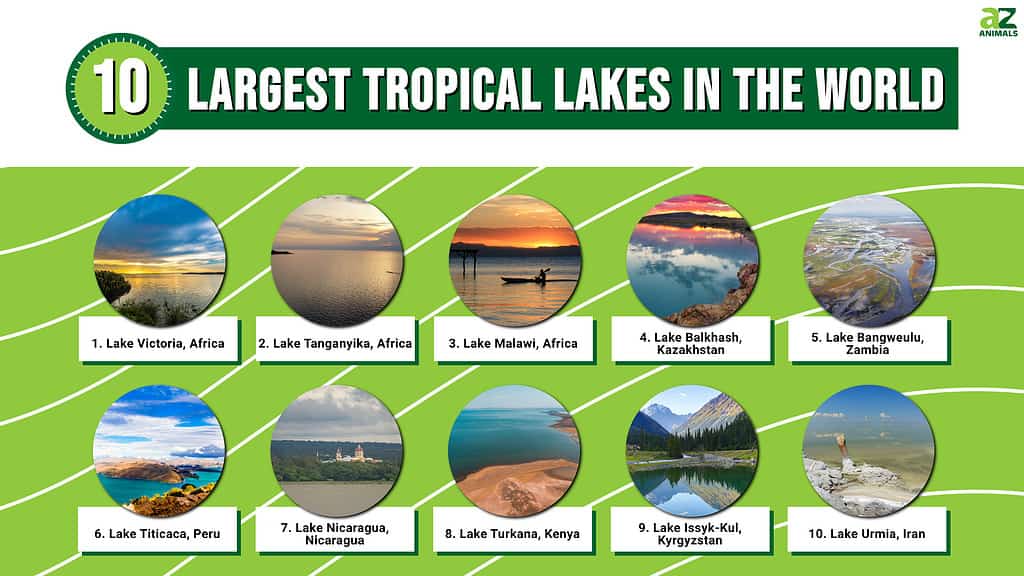
The 10 Largest Tropical Lakes In The World
10. Lake Urmia, Iran

©iStock.com/Elena Odareeva
Lake Urmia is an endorheic salt lake in Iran. At its greatest extent, it was once the largest lake in the Middle East and the sixth-largest saltwater lake on Earth, with a surface area of approximately 2,007 sq mi or 5,200 km2. In 2017, the lake had shrunk to 10% of its previous size due to the continuous drought in Iran. The lake is currently filling up again after the dry spell ended in 2019.
Because of above-average precipitation and the operations of the Lake Urmia Restoration Program, the lake’s recovery proceeded in 2020. It was a large lake where people frequently swam. Many people believed that swimming in the salty lake was healthy for their skin. There were numerous hotels and tourist attractions, but now, most of them are out of business.
9. Lake Issyk-Kul, Kyrgyzstan
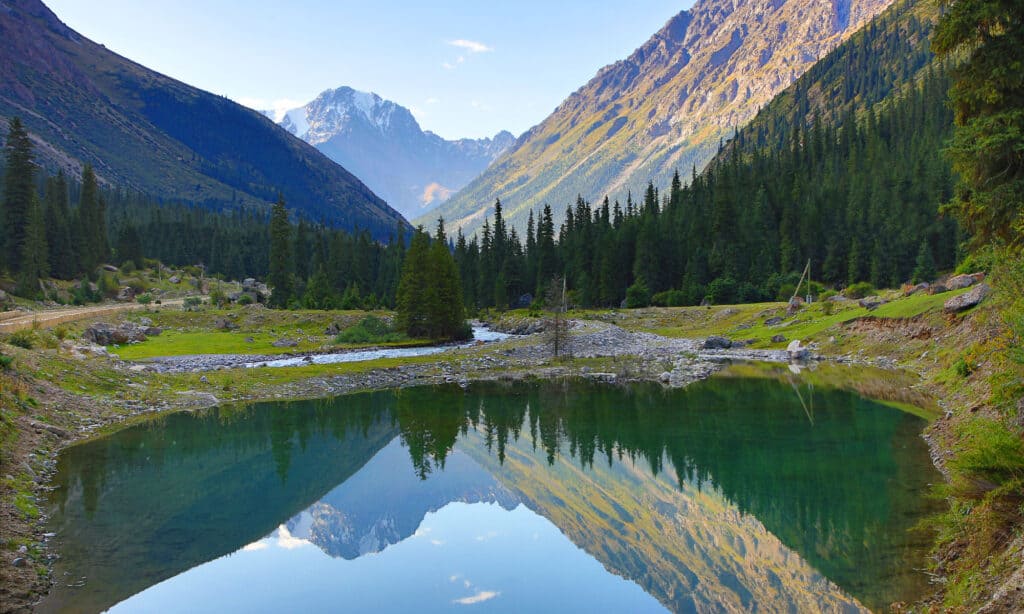
Lake Issyk-Kul is an endorheic lake with a surface area of 2,393 square miles.
©iStock.com/Ozbalci
Kyrgyzstan’s climate varies dramatically depending on location, ranging from dry continental to polar in the Tien Shan Mountains, subtropical in the southwest (Fergana Valley), and temperate in the northern foothill zone. Lake Issyk-Kul is an endorheic lake in Eastern Kyrgyzstan’s Northern Tian Shan mountains. With a surface area of approximately 2,393 sq mi or 6,200 km2, it is the world’s seventh-deepest lake, the tenth-largest lake by volume, and the second-largest saline lake after the Caspian Sea.
Issyk-Kul means “warm lake” in the Kyrgyz language. Sevan trout, native to Armenia’s Lake Sevan, was introduced to Issyk-Kul. While this fish is an endangered species in its “home” lake, it has a greater chance of surviving in Lake Issyk-Kul.
8. Lake Turkana, Kenya
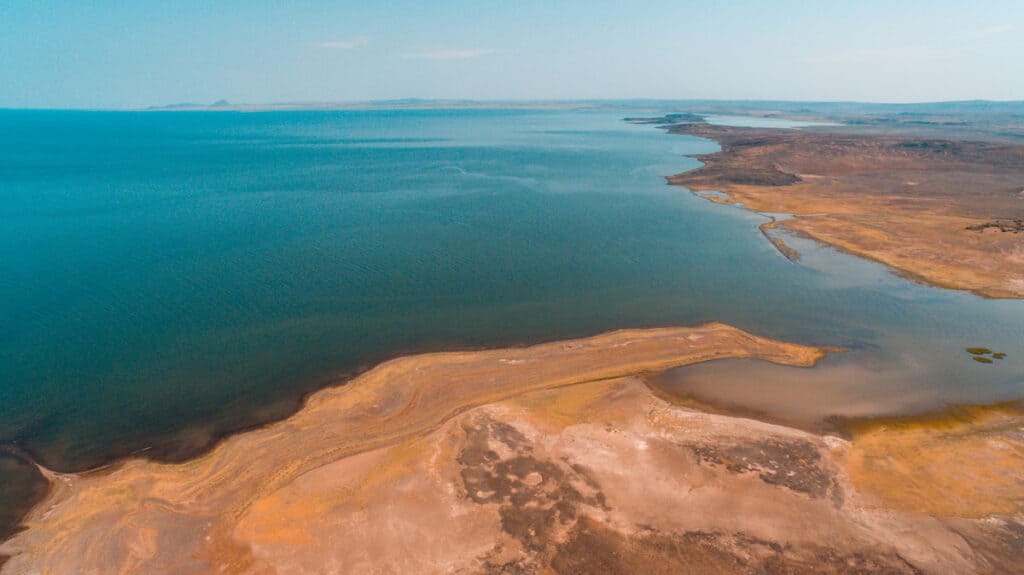
The largest alkaline lake in the world is Lake Turkana.
©MOIZ HUSEIN STORYTELLER/Shutterstock.com
Lake Turkana, previously Lake Rudolf, is a lake in northern Kenya’s Kenyan Rift Valley, with its far north end bordering Ethiopia. It is the world’s largest permanent desert lake and the world’s largest alkaline lake, with a surface area of approximately 2,473 sq mi or 6,405 km2.
Lake Titicaca is notable for the colorful, constantly changing reflections that adorn its surface. It is one of the most well-known fossil locations in the country, with a famous site at Koobi Fora. Anglers are attracted to the lake’s 60 varieties of fish, including tigerfish, catfish, pufferfish, tilapia, and Nile perch. The further north you go in Turkana territory, the less welcome you feel, but the flamingo flocks on the caustic lakes seem quite at home.
7. Lake Nicaragua, Nicaragua

Also known as Cocibolca, Lake Nicaragua is the largest lake in Central America.
©iStock.com/FARUK BUDAK
Lake Nicaragua, also known as Cocibolca or “sweet sea,” is a freshwater lake in Nicaragua. It is the largest lake in Central America, the 19th-largest lake in the world (by area), and the tenth-largest in the Americas, with an area of 3,191 sq mi (8,264 km2), slightly smaller than Lake Titicaca. It’s the only freshwater lake with marine life.
Many believe that the lake was formerly an ocean bay until a volcanic eruption turned it into an inland basin. It trapped aquatic creatures, such as bull sharks, tarpon, and swordfish, which adapted to their new freshwater habitat. Yes, you read that right. Bull sharks are known to dwell in Lake Nicaragua, and they are one of the most dangerous species for people in the world’s oceans.
6. Lake Titicaca, Peru

The largest lake in South America is Lake Titicaca.
©iStock.com/StreetFlash
Lake Titicaca is record-breaking for being the world’s highest lake. With a surface area of 3,232 sq mi or 8,372 km2, it’s the largest lake in South America. It is a large, deep, freshwater lake in the Andes on the border of Bolivia and Peru and one of Peru’s most popular tourist attractions. Fishing is a traditional occupation for the people who live along Lake Titicaca’s shoreline.
Lake Titicaca boasts roughly 58 different types of fish, and the little teleosts Karachi is the most important fish species. With 530 species calling the waters home, the lake itself is home to some strange and fascinating fauna. Many animals have evolved specifically and uniquely to live at such a high elevation. The fully aquatic giant Titicaca water frog, for example, has folds and flaps of extra skin to aid oxygen absorption at high altitudes.
5. Lake Bangweulu, Zambia
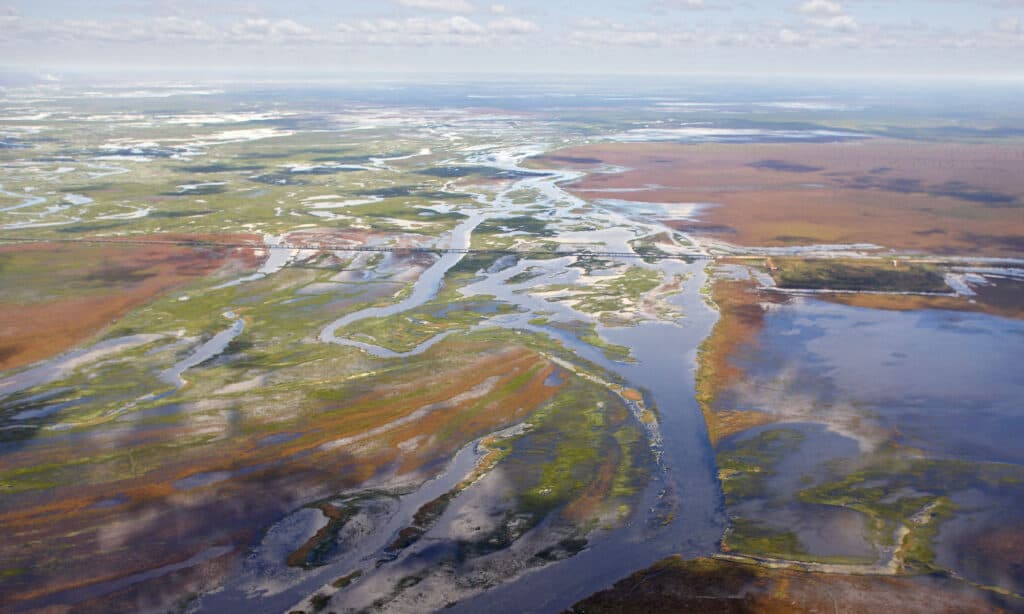
Lake Bangweulu has a surface area of 5,830 square miles.
©iStock.com/Michel VIARD
Bangweulu — ‘where the water sky meets the sky’ — is one of the world’s great wetland systems, including Lake Bangweulu, the Bangweulu Swamps, and the Bangweulu Flats or floodplain. Lake Bangweulu, or Large Water, is a shallow lake with extensive swamps in northeastern Zambia and has a surface area of 5,830 sq mi or 15,100 sq km.
When looking out over Lake Bangweulu, the grey-blue waters vanish into the horizon, perfectly blending with the sky’s color. The Nile Crocodile and the Central African Slender Snouted Crocodile are native to Zambia. The latter thrive around Lake Bangweulu and the Luapula River in the Northern and Luapula Provinces.
4. Lake Balkhash, Kazakhstan

Covering about 6,332 square miles, Lake Balkhash is the largest lake wholly in Kazakhstan.
©Maxim Petrichuk/Shutterstock.com
Lake Balkhash is the 15th largest lake in the world and one of Asia’s biggest. It’s located in southeastern Kazakhstan, in the east of Central Asia, and is part of an endorheic (closed) basin. The lake covers about 6,332 sq mi or 16,400 km2, making it the largest lake wholly in Kazakhstan. The lake’s uniqueness stems from the fact that it is divided by a narrow strait, each with differing water compositions – the western portion is almost fresh, while the eastern part is brackish.
The Balkhash perch is endemic to the lake and Lake Alakol watershed systems. It has a slimmer build and is lighter in color than others, but it grows to a similar size. Balkhash perch are predators by nature, eating fish (mainly non-target and small species), trout, and the young of other species, but they also devour their eggs and fry.
3. Lake Malawi, Africa
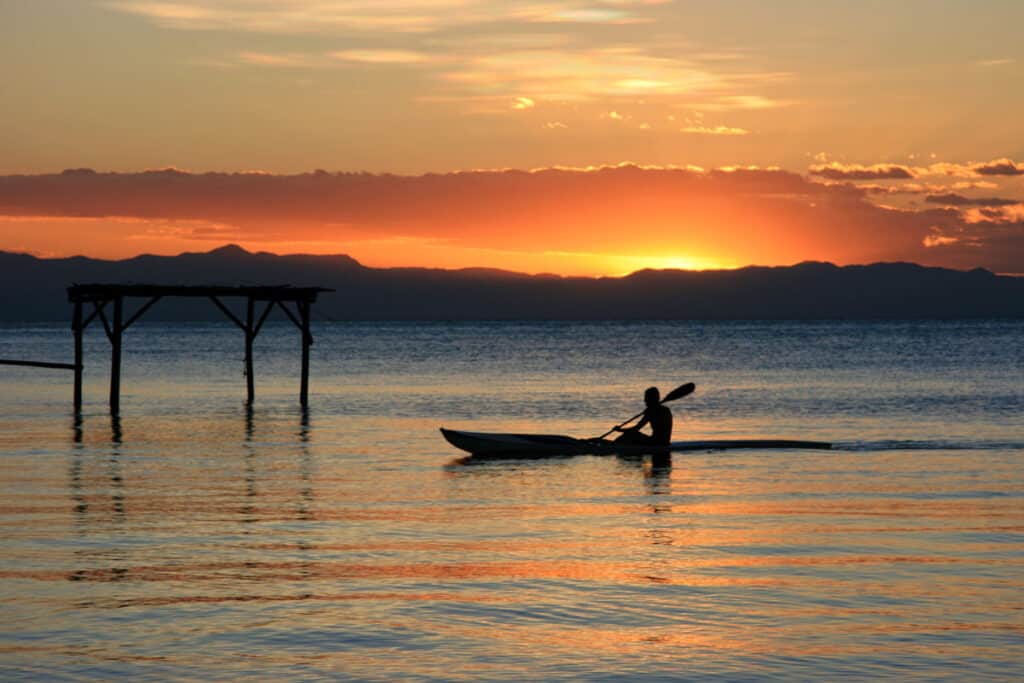
By area, Lake Malawi is the ninth-largest lake in the world.
©iStock.com/Tristan Barrington Photography
Lake Malawi, also known as Lake Nyasa in Tanzania and Lago Niassa in Mozambique, is an African Great Lake located between Malawi, Mozambique, and Tanzania. With a surface area of 11,428 sq mi or 29,600 km2, it is the ninth largest lake in the world by area and the third largest and second deepest lake in Africa.
The breathtaking vista of the mountains complements its glistening pure water. The lake is home to hundreds of fish, including many species found nowhere else on the planet. It is well-known for being the site of evolutionary radiations in different animal species, most notably cichlid fish. These have received attention for the last century because of their extraordinary and unusual diversity since the fish have developed in isolation to produce a large number of unique species.
2. Lake Tanganyika, Africa
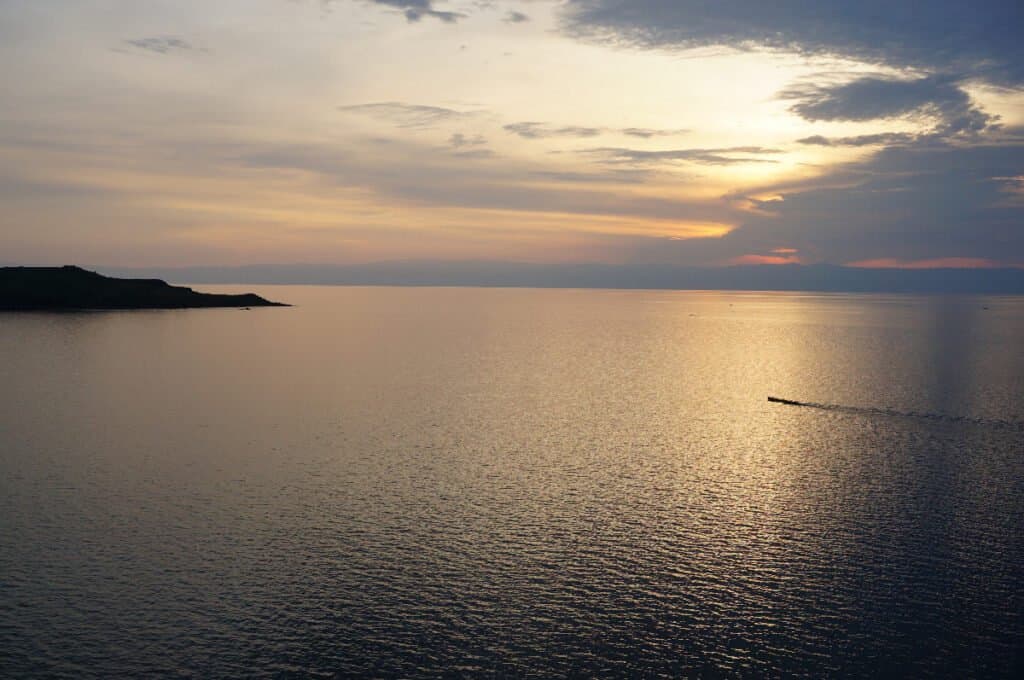
The world’s longest freshwater lake is Lake Tanganyika.
©Naoki Kakuta/Shutterstock.com
Lake Tanganyika is an African Great Lake. After Lake Baikal in Siberia, it is the world’s second-oldest freshwater lake, the second-largest by volume, and the second-deepest. It is the world’s longest freshwater lake, with a surface area of 12,702 sq mi or 32,900 km2.
Tanzania, the Democratic Republic of the Congo (DRC), Burundi, and Zambia are the four countries that share the lake, with Tanzania (46%) and the DRC (40%) owning most of it. The lake is safe to swim in, although we recommend exercising caution. With over 2000 species of fish, plants, crustaceans, and birds, Lake Tanganyika is one of the world’s richest freshwater environments. About 500 species are unique to the lake, with cichlid fish accounting for half. The region also includes forest areas among the few remaining habitats for chimpanzees and gorillas.
1. Lake Victoria, Africa
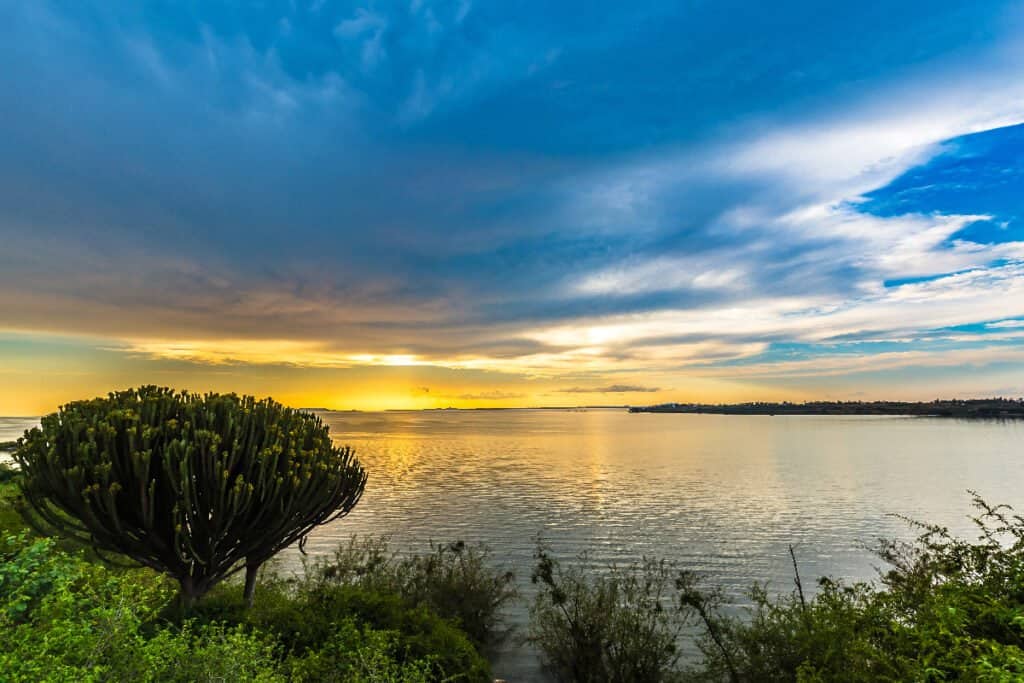
Lake Victoria is the largest tropical lake in the world.
©Stefan Haider/Shutterstock.com
One of the world’s most famous lakes, Lake Victoria, sits at the border of Uganda, Kenya, and Tanzania in Africa’s Great Lakes region. With a surface area of approximately 23,145 sq mi or 59,947 km2, Lake Victoria is the largest lake in Africa, the world’s largest tropical lake, and the second-largest freshwater lake by surface area after Lake Superior in North America.
Lake Victoria is home to around 200 different fish species and has unique geographical features such as reefs and several islands. Although swimming in Lake Victoria is prohibited, you will observe locals and international visitors do so. The main worry about swimming in Lake Victoria is the risk of contracting bilharzia. Hippopotamus and crocodile populations are also abundant in the lake.
Summary Of The 10 Largest Tropical Lakes In The World
| Rank | Tropical Lake | Approximate Surface Area |
|---|---|---|
| 10 | Lake Urmia, Iran | 2,007 sq mi |
| 9 | Lake Issyk-Kul, Kyrgyzstan | 2,393 sq mi |
| 8 | Lake Turkana, Kenya | 2,473 sq mi |
| 7 | Lake Nicaragua, Nicaragua | 3,191 sq mi |
| 6 | Lake Titicaca, Peru | 3,232 sq mi |
| 5 | Lake Bangweulu, Zambia | 5,830 sq mi |
| 4 | Lake Balkhash, Kazakhstan | 6,332 sq mi |
| 3 | Lake Malawi, Africa | 11,428 sq mi |
| 2 | Lake Tanganyika, Africa | 12,702 sq mi |
| 1 | Lake Victoria, Africa | 23,145 sq mi |
The photo featured at the top of this post is © iStock.com/Michel VIARD
Thank you for reading! Have some feedback for us? Contact the AZ Animals editorial team.






